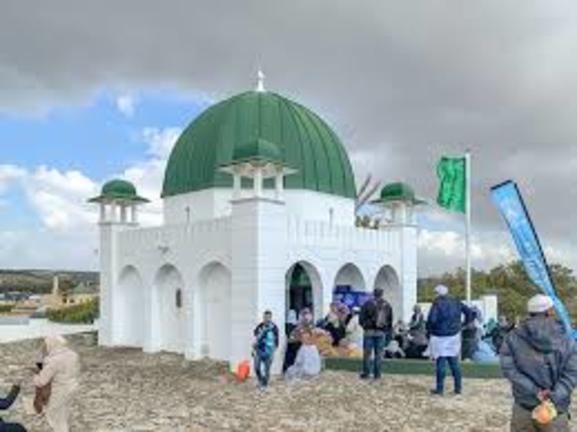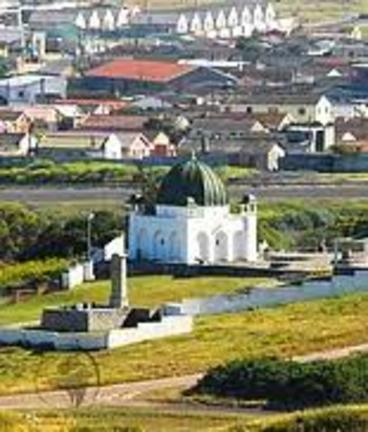In the Cape Flats town of Helderberg is the suburb of Maccasar. It was once a sanctuary for runaway slaves as well as the first Muslim settlement in the country. It is also the burial place of Sheikh Yusuf of Gowa.
The kramat celebrates the life of Sheikh Yusuf. Born in 1626, he was the brother of the Sultan of Macassar and was, in his own right, the ruler of Gowa on the South East Asian islands of Celebes. In 1646 on a missionary trip to Bantam in Java, Yusef married the daughter of the Sultan of Bantam, Abdul Fatah the Great.
At the time, the Dutch East India Company was working to gain a trade monopoly in the area. Something the Sultan of Bantam was decidedly against. Yusef, supported his father-in-law against the Company. They were unsuccessful and, on his surrender, Yusef was imprisoned in Jakarta in the Castle of Batavia, the administrative centre of Dutch East India Company in Asia. The Company had no intention of allowing Yusuf any influence in Jakarta and in 1684 was banished to Ceylon. From there, fearing an uprising, The Company banished 49 people including Yusef, his family and his retinue, to the Cape in South Africa. When they arrived, they were, at first, kept in the Castle in Cape Town.
Ten years later, they were moved to the farm, Zandvliet, at the mouth of the Eerste River at False Bay. Although there were already some Muslims at the Cape before the arrival of Yusuf, he is regarded as the founder of the Islamic faith at the Cape.
The suburb was named in his honour, Macassar, as that was where Sheikh Yusuf was from originally. Only after his death were his wives and daughters allowed to return to their homeland.
Some prominent Malays at the Cape trace their ancestry to his followers, who were also of noble descent. Local Muslims regularly visit his kramat near Faure. The actual tomb is permanently kept covered with costly cloths donated by devout pilgrims. There is some doubt that Sheik Yusef’s remains are still in this kramat as legend has it that his remains were exhumed in 1705 and reburied at the foot of the burial-hill Bonto Biraeng in Macassar, Indonesia.



